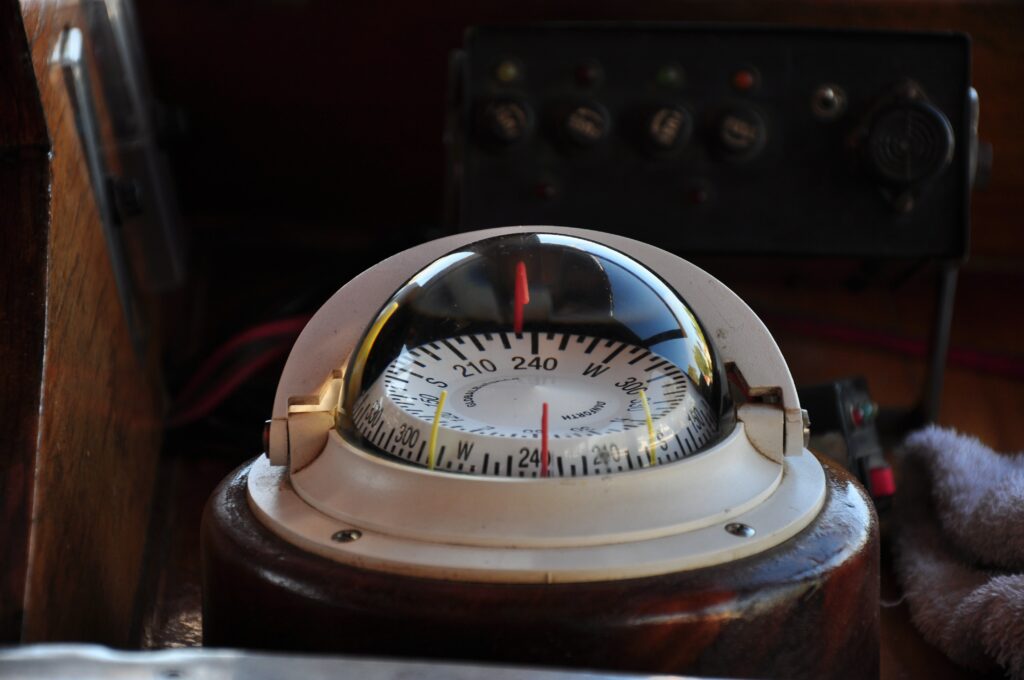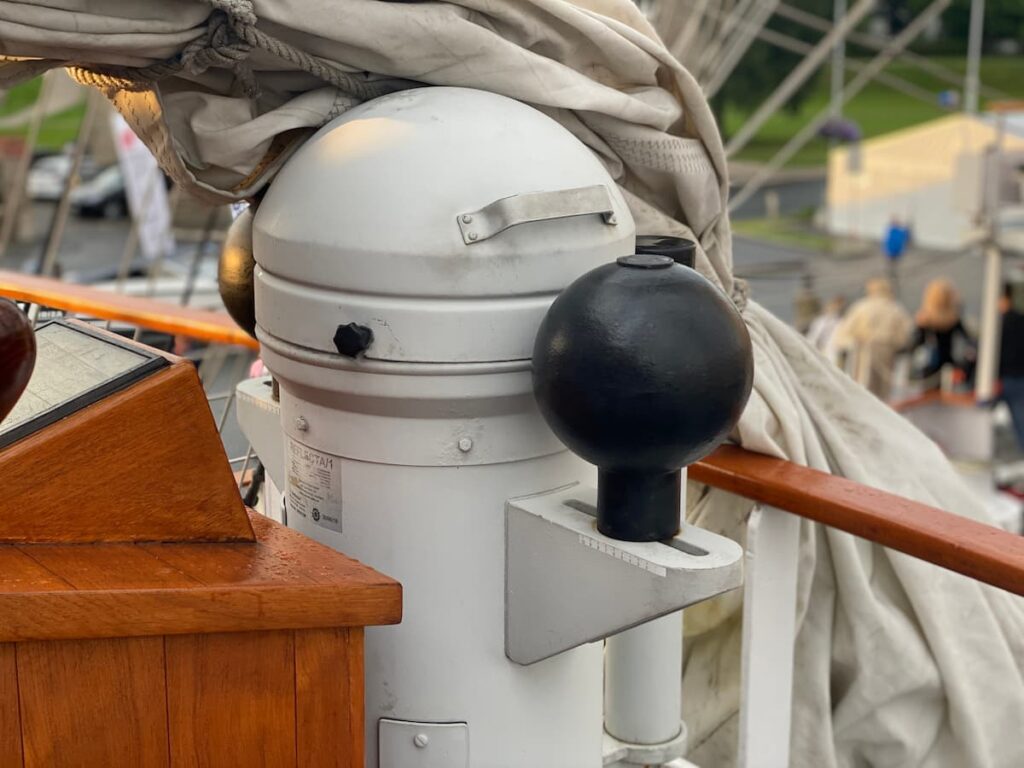Navigating using a magnetic compass is a skill that every sailor or navigator must master. However, even with modern technological advancements in navigation, the magnetic compass is still an essential tool that every navigator should know how to use.
However, errors in magnetic compass reading can occur and lead to navigational disasters. In this article, we will explore some of the common errors in magnetic compass reading and how to avoid them.
Navigating using a magnetic compass is a skill that every sailor or navigator must master. However, even with modern technological advancements in navigation, the magnetic compass is still an essential tool that every navigator should know how to use. However, errors in magnetic compass reading can occur and lead to navigational disasters. In this article, we will explore some of the common errors in magnetic compass reading and how to avoid them.

Understanding the Basics of Magnetic Compass Reading
Before diving into common errors in magnetic compass reading, it is essential to understand the basics of how a magnetic compass works. A magnetic compass operates based on the Earth’s magnetic field. It has a compass card with north, south, east, and west points, and a magnetic needle that points towards magnetic north. The compass card is divided into degrees, and the degree reading on the compass helps to determine the vessel’s heading.
The Effect of Deviation on Magnetic Compass Reading
The deviation is the most common error in magnetic compass readings. Deviation occurs when the magnetic compass’s magnetic needle is affected by the magnetic fields generated by the vessel itself, such as the metal components of the vessel, the electrical equipment, and other magnetic sources. Deviation leads to a shift in the compass reading, and if not corrected, it can result in navigational errors.
To correct for deviation, the navigator must create a deviation card that records the difference between the magnetic compass reading and the gyrocompass reading at different headings. The deviation card is specific to each vessel and takes into account the vessel’s construction, equipment, and layout. The navigator must use the deviation card to correct the magnetic compass reading for deviation and obtain a more accurate heading.
The effect of deviation on magnetic compass reading can be significant and lead to navigational errors, especially in smaller vessels. Therefore, it is essential for navigators to understand the basics of deviation and how to correct for it to ensure safe and accurate navigation.

The Effect of Variation on Magnetic Compass Reading
Variation is the angle between true north and magnetic north. It varies depending on the geographic location and changes over time. Variation is a crucial factor in magnetic compass reading because it affects the accuracy of the compass reading.
The effect of variation on magnetic compass reading is that it can lead to navigational errors if the navigator does not take it into account. If a navigator uses a magnetic compass without correcting for variation, the vessel may be heading in the wrong direction. Therefore, it is essential to correct for variation when using a magnetic compass to ensure accurate navigation.
To correct for variation, the navigator must use a variation chart specific to the geographic location and the date. The variation chart provides the angle of variation, which the navigator can use to correct the magnetic compass reading and obtain a more accurate heading.
The effect of variation on magnetic compass reading is significant, and navigators must correct for it to ensure safe and accurate navigation. By understanding the basics of variation and using a variation chart, navigators can correct the compass reading and obtain an accurate heading.
The Effect of Dip on Magnetic Compass Reading
The dip is another factor that affects the accuracy of the magnetic compass readings. A dip refers to the angle that the magnetic compass needle makes with the horizontal plane. The magnetic compass needle dips towards the earth’s magnetic poles, and the amount of dip depends on the geographic location.
The effect of dip on magnetic compass reading is that it can cause the magnetic compass to read incorrectly when the vessel is not level. When the vessel rolls or pitches, the magnetic compass needle can dip further toward the earth’s magnetic poles, causing the compass to read inaccurately. This can lead to navigational errors, especially in rough seas or when navigating in areas with high dip angles.
To correct for a dip, the navigator must ensure that the vessel is level when taking magnetic compass readings. The navigator can use a clinometer to measure the vessel’s angle of heel and adjust the magnetic compass reading accordingly.
In summary, the effect of a dip on magnetic compass reading can be significant and lead to navigational errors if not corrected. By understanding the basics of dip and ensuring that the vessel is level when taking magnetic compass readings, navigators can obtain accurate headings and ensure safe navigation.
The Effect of Acceleration and Deceleration on Magnetic Compass Reading
Acceleration and deceleration can also affect the accuracy of the magnetic compass readings. When the vessel accelerates or decelerates, the movement can cause the magnetic compass needle to swing temporarily and affect the compass reading.
The effect of acceleration and deceleration on magnetic compass reading is that it can cause the compass to read inaccurately, leading to navigational errors. The extent of the effect depends on the vessel’s size, speed, and maneuverability.
To correct the effect of acceleration and deceleration on magnetic compass reading, navigators must use a technique called swing error correction. This involves taking several magnetic compass readings while the vessel is stationary and then again while it is moving at different speeds and in different directions. By comparing the stationary and moving readings, the navigator can determine the extent of the swing error and make the appropriate correction to the compass reading.
The effect of acceleration and deceleration on magnetic compass reading can be significant and lead to navigational errors if not corrected. By using swing error correction and making the appropriate adjustments to the compass reading, navigators can obtain accurate headings and ensure safe navigation.
Oscillation Error
An oscillation error is a type of error that can affect the accuracy of a magnetic compass reading. It occurs when the compass needle swings back and forth rapidly around the correct heading, making it difficult to determine the correct reading.
Oscillation error can be caused by several factors, including the magnetic field of the earth, the magnetic field of the vessel, and the damping system of the compass. In some cases, it can also be caused by external factors such as vibration or movement of the vessel.
The effect of oscillation error on magnetic compass reading is that it can make it difficult to obtain an accurate heading, which can lead to navigational errors. To correct for oscillation errors, navigators may use a technique called “damping” to reduce the movement of the compass needle. This involves using a fluid-filled compass or a gyrocompass, which are designed to reduce the effects of oscillation error.
In summary, oscillation error is a type of error that can affect the accuracy of magnetic compass readings. By understanding the causes of oscillation errors and using appropriate correction techniques, navigators can obtain accurate headings and ensure safe navigation.
The Effect of Leeway on Magnetic Compass Reading
Leeway is the lateral movement of a vessel caused by wind and currents. It can also affect the accuracy of magnetic compass readings by causing the vessel to move off its intended course.
The effect of leeway on magnetic compass reading is that it can cause the vessel to be heading in a different direction than what the compass is indicating. This can lead to navigational errors, especially when navigating in areas with strong wind and currents.
To correct the effect of leeway on magnetic compass reading, navigators must use a technique called leeway correction. This involves adjusting the compass heading based on the estimated amount of leeway. The navigator can estimate the amount of leeway by observing the vessel’s drift angle and comparing it to the true course.
The effect of leeway on magnetic compass reading can be significant and lead to navigational errors if not corrected. By understanding the basics of leeway and using leeway correction techniques, navigators can obtain accurate headings and ensure safe navigation.
The Effect of Magnetic Interference on Magnetic Compass Reading
Magnetic interference is another factor that can affect the accuracy of the magnetic compass readings. Magnetic interference occurs when there are other sources of magnetic fields near the compass, such as electronic equipment, metal objects, or the vessel’s own magnetic field.
The effect of magnetic interference on magnetic compass reading is that it can cause the compass to read inaccurately, leading to navigational errors. The extent of the effect depends on the strength and proximity of the magnetic source and the sensitivity of the compass.
To correct for the effect of magnetic interference on magnetic compass reading, navigators must identify and eliminate or minimize the source of interference. This may involve turning off electronic equipment or relocating metal objects. If the vessel’s own magnetic field is causing interference, the navigator may need to use a technique called deviation correction, which involves adjusting the compass reading based on the vessel’s unique magnetic characteristics.
In summary, the effect of magnetic interference on magnetic compass reading can be significant and lead to navigational errors if not corrected. By understanding the basics of magnetic interference and using appropriate correction techniques, navigators can obtain accurate headings and ensure safe navigation.
Conclusion
Navigating using a magnetic compass is a crucial skill for every sailor or navigator. However, errors in magnetic compass reading can occur and lead to navigational disasters. By understanding the basics of magnetic compass reading and how to correct common errors, navigators can ensure that they maintain an accurate heading and avoid navigational errors.
- Types of Gas Carriers as per IGC Code – April 22, 2025
- Wind-Assisted Propulsion Systems (WAPS): A Game Changer for Maritime Decarbonization – February 6, 2025
- 10 Boat Salvage Yards in California – January 25, 2025




